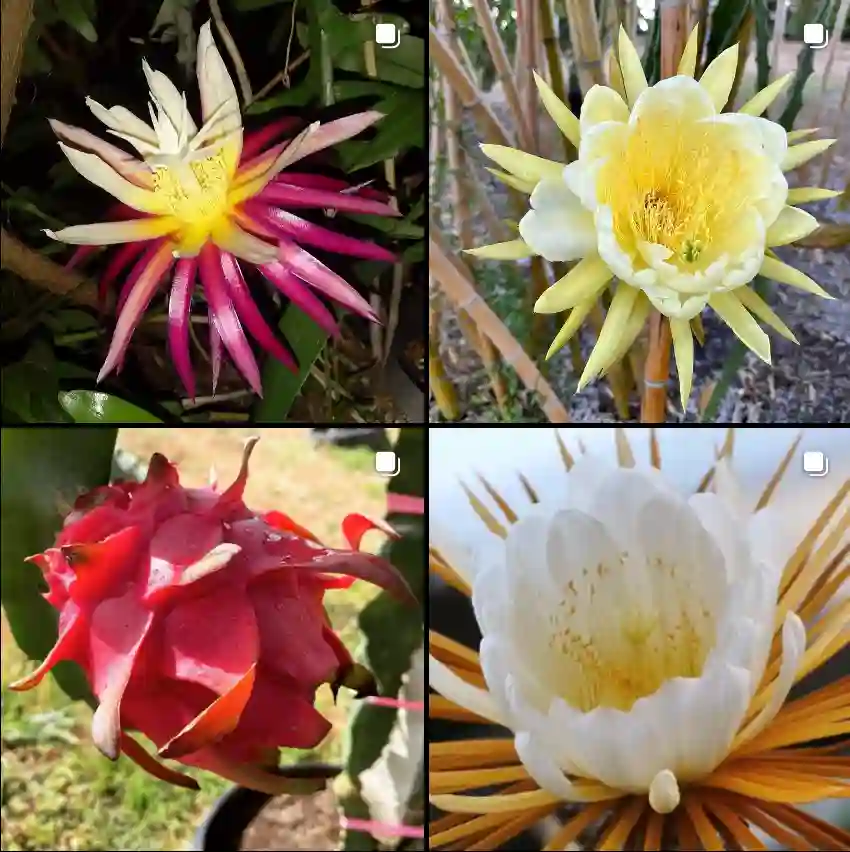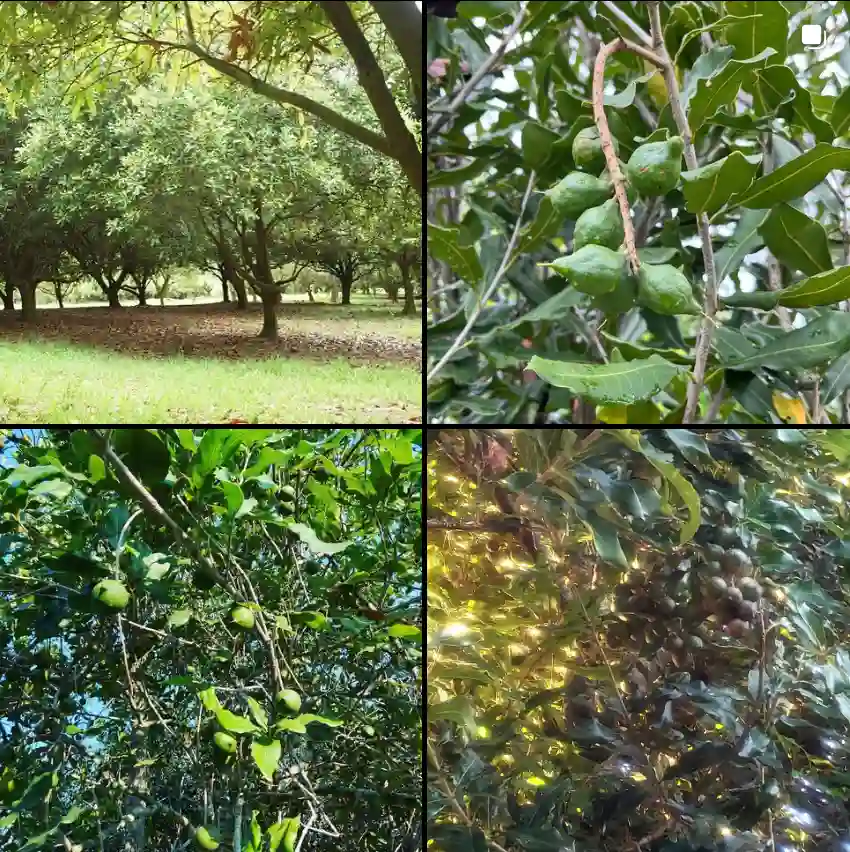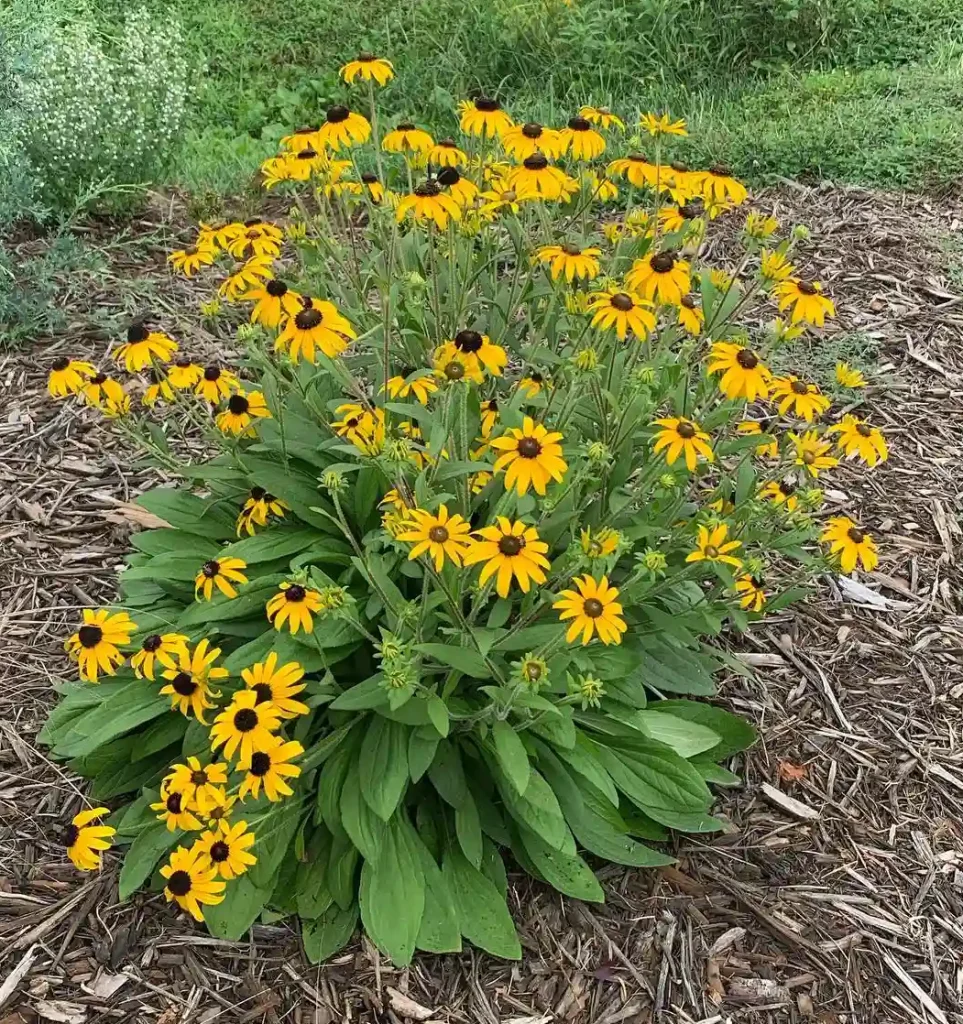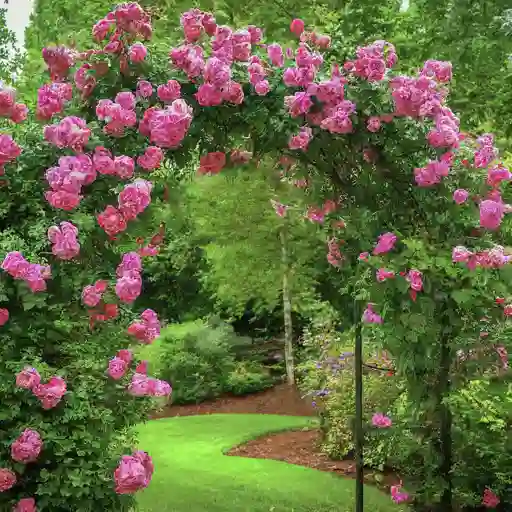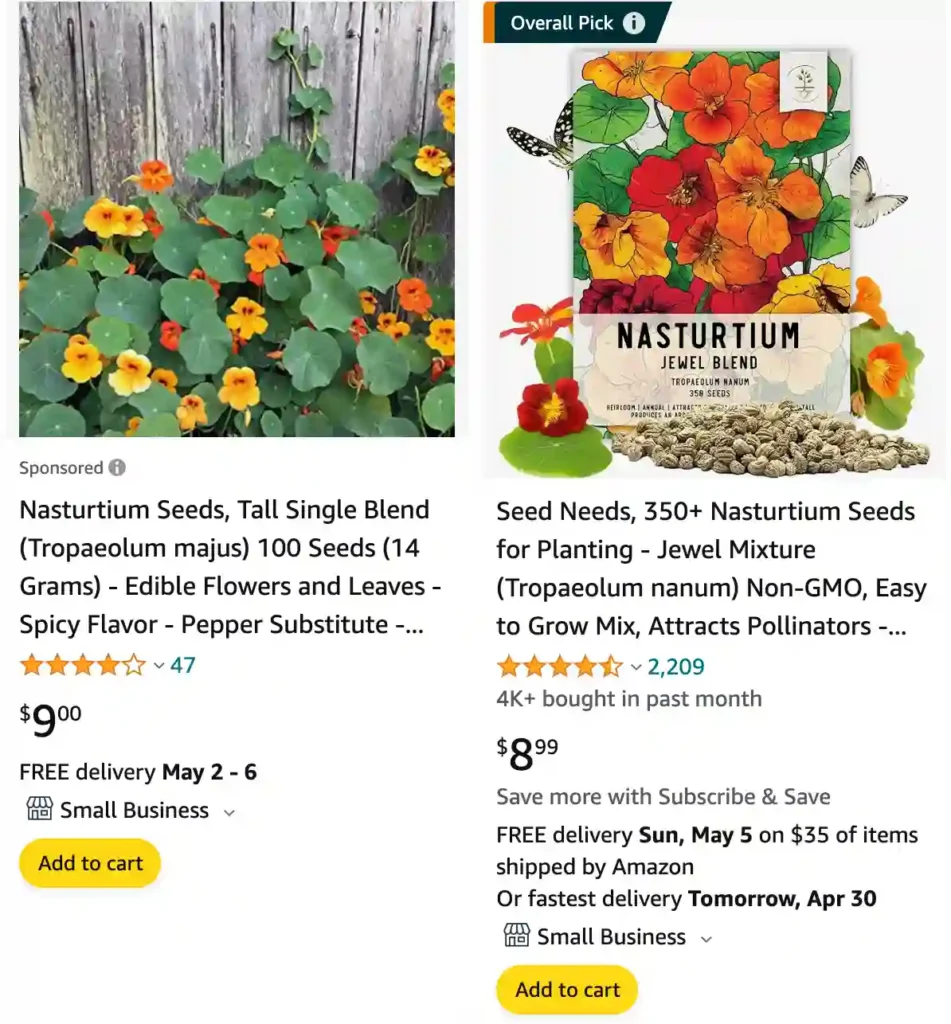
Nasturtiums: A Splash of Color in My Garden
The vibrant hues of nasturtiums have always captivated me. Their cheerful blossoms, ranging from fiery oranges and reds to sunny yellows and deep crimsons, bring a sense of joy to any garden. As an avid gardener, I’ve found them to be incredibly rewarding plants to cultivate, not only for their beauty but also for their versatility.
Nasturtiums, belonging to the Brassicaceae family, are a delightful addition to any garden. Native to South America, these plants have gained popularity worldwide for their ease of growth and ornamental value. They’re relatively low-maintenance, thriving in full sun and well-drained soil. I’ve even had success growing them in containers on my balcony!
A Feast for the Senses
What I love most about nasturtiums is their unique peppery flavor. Both the leaves and flowers are edible, adding a zesty kick to salads, sandwiches, and even stir-fries. I often use the flowers as a garnish, their vibrant colors transforming any dish into a culinary masterpiece. There’s nothing quite like the burst of flavor when you bite into a nasturtium blossom – it’s like summer sunshine captured in a single bite.
Beyond their culinary uses, nasturtiums are a feast for the eyes. Their rounded leaves, often described as “lily-pad” shaped, provide a lush backdrop for the vibrant flowers. The flowers themselves are a marvel, with their spurred petals resembling tiny trumpets. They attract a myriad of pollinators, including bees and butterflies, adding another layer of life and movement to the garden.
Nasturtium species
- Nasturtium floridanum (Al-Shehbaz & Rollins) Al-Shehbaz & R.A.Price
- Nasturtium gambelii (S.Watson) O.E.Schulz
- Nasturtium microphyllum (Boenn.) Rchb.
- Nasturtium officinale W.T.Aiton
- Nasturtium × sterile (Airy Shaw) Oefelein
What not to plant with nasturtiums?
I learned the hard way about not planting nasturtiums next to my broccoli. Those little green monsters seemed to be competing for water and nutrients – both the broccoli and the nasturtiums ended up kind of stunted and sad. Plus, the broccoli leaves had more holes than usual, which I’m pretty sure were from hungry cabbage moths that the nasturtiums were supposed to be attracting away! Next year, I’m definitely planting my nasturtiums with some of my climbing beans – they should be a happier couple.
Does nasturtium climb?
You bet nasturtiums climb! They’re not shy vines at all. Their long stems love to reach for the sun and will happily scramble up any trellis, fence, or supportive structure you give them. I’ve even seen them twine around other plants, though that can get a bit messy. They grow pretty fast too, so you’ll be rewarded with a cascading curtain of colorful flowers in no time.
Do deer eat nasturtiums?
No way! Deer find nasturtiums totally unappetizing. Thank goodness! Those pretty little flowers with their peppery bite are a natural deer repellent for my garden. I’ve heard they’re so spicy that deer won’t even touch them – even if other food sources are scarce. This year, I planted a whole border of nasturtiums around my rose bushes, and those hungry deer haven’t bothered a single rose bud.
Is nasturtium a perennial?
Actually, nasturtiums can be a bit of a surprise in the perennial department! They can be both annuals and perennials depending on the climate. In most places, like mine, nasturtiums are treated as annuals because the cold weather wipes them out. But, I hear that in warmer zones, nasturtiums can be perennials and come back year after year. Wouldn’t that be lovely? Maybe someday I’ll be able to try that!
Do nasturtiums self seed?
You bet nasturtiums self-seed! They’re like little gardening ninjas, multiplying every year if you let them. Last summer, I left a few spent nasturtium flowers on the vine and forgot about them. Come spring, I had a whole army of baby nasturtiums popping up all over the place – some even snuck up in the middle of my tomato plants! It was a bit wild, but kind of fun to see them surprise me. Now, I like to collect some seeds and plant them in areas where I want a splash of color, and leave the rest to self-seed for a natural, whimsical look.
How to pronounce nasturtium?
Nasturtium can be a bit of a tongue twister if you’re not used to it! The trickiest part for me is that first syllable. It’s not quite “nas” like in “nasty,” but more like “nuh” with a soft “u” sound at the end. Here’s how I break it down:
- Nast – This sounds like “nuh” + a very short “u” like in “but.” Don’t make the “u” sound too long or it will start to sound like “nasty.”
- Tur – This is pretty straightforward, just like the first part of “turtle.”
- Tium – This rhymes with “museum.”
So, if you put it all together, it sounds like “nuh-STUR-shum.” You can practice saying it slow at first, then try saying it faster. There are also some great pronunciation videos online if you want to hear a native speaker say it [YouTube nasturtium pronunciation]. Don’t worry, once you get the hang of it, nasturtium will be rolling off your tongue in no time!
Are nasturtium leaves edible?
Absolutely! Nasturtium leaves are not just edible, they’re a delightful surprise in the garden. They’re like peppery little bursts of sunshine on your tongue. I love to add a handful of young nasturtium leaves to my salads for a bit of a spicy kick. They’re milder than a true peppery green like arugulaPlant FAQs: Arugula, but still have a pleasant peppery bite that wakes up the other flavors. And the best part? They’re gorgeous! The bright green, round leaves add a lovely pop of color to any dish. Plus, they’re super easy to grow, so you can have a fresh supply all summer long.
Are nasturtiums poisonous to dogs?
Luckily, nasturtiums shouldn’t be a problem for your furry friend! While I haven’t personally given my dog a nasturtium flower (they seem more interested in chasing squirrels than snacking on flowers!), from what I’ve read, nasturtiums are considered non-toxic to dogs by the ASPCA [ASPCA nasturtium]. That being said, it’s always best to err on the side of caution. If your pup decides to munch on a large amount of nasturtiums, they might get an upset stomach, but it shouldn’t be serious. If you’re ever worried about your dog eating something in the garden, it’s a good idea to call your vet for advice.
Can chickens eat nasturtiums?
You bet my chickens love nasturtiums! They gobble up both the leaves and the flowers like little feathered confetti machines. It’s a fun treat for them, and from what I’ve read, nasturtiums might even have some health benefits for my flock. They’re high in vitamin C, which is great for their immune system, and some folks say they can even help with worms. Plus, the nasturtiums seem to attract beneficial insects that help keep the nasty bugs away from my other plants. It’s a win-win! I just make sure the nasturtiums I toss in are free of pesticides or chemicals, and that there’s plenty of their regular food available too. Nasturtiums are a tasty treat, not a replacement for their balanced diet.
Can you grow nasturtiums indoors?
While nasturtiums aren’t the easiest plant to grow indoors, it can definitely be done with the right setup! They’re sunshine seekers by nature, so mimicking their outdoor environment is key. In my experience, here’s what works for me:
First, I find a pot with good drainage and place it in a super sunny spot, ideally a south-facing window. If natural light isn’t enough, supplement with grow lights to give them at least 6 hours of bright light a day. Regular watering is important, but don’t drown them – let the soil dry out slightly between waterings. Nasturtiums also like good air circulation, so avoid cramming them in a corner with other plants.
With a little TLC, you should be rewarded with some beautiful blooms indoors. Just be aware that they might not be as prolific as they are outside in the summer sun. But hey, the reward of having homegrown nasturtiums to add peppery flavor to winter salads or enjoy the vibrant flowers is worth the effort in my book!
How to eat nasturtium?
Nasturtiums are like the edible confetti of the garden! The best part is you can enjoy both the leaves and flowers in all sorts of ways. Here’s how I love to eat them:
- Salads: A handful of young nasturtium leaves adds a delightful peppery kick to any salad. They’re milder than arugula but still have a nice bite that wakes up the other flavors. Plus, the bright green leaves are gorgeous!
- Garnishes: Nasturtium flowers are the ultimate edible garnish! Their vibrant colors add instant cheer to soups, sandwiches, or even fancy cocktails.
- Sandwiches: Tuck a few nasturtium leaves or petals into your next sandwich for a surprising pop of color and peppery flavor.
- Stuffed Flowers: Believe it or not, you can stuff nasturtium flowers! Try a creamy goat cheese or a mixture of ricotta and herbs.
- Vinegar: Nasturtiums can infuse vinegar with a lovely peppery flavor. Perfect for salad dressings or adding a kick to marinades.
- Pesto: Nasturtium leaves can be used to make a delicious pesto, either on their own or mixed with basil for a unique twist.
- Desserts: Nasturtium flowers can add a beautiful pop of color to cakes, cupcakes, or even fancy ice cream sundaes.
No matter how you choose to eat them, nasturtiums are a fun and flavorful way to add a bit of garden magic to your plate! Just remember to choose unwilted flowers and leaves, and wash them gently before enjoying.
Where to buy nasturtium?
You can find nasturtiums in a few different places depending on what you’re looking for:
- Local nursery or garden center:This is a great option if you want to see the plants in person before you buy them. Many places will also have a variety of nasturtium seeds and seedlings to choose from.
- Online retailers: There are many online retailers that sell nasturtium seeds and plants. This can be a convenient option if you can’t find nasturtiums at a local nursery or garden center. However, you won’t be able to see the plants in person before you buy them.
- Big box stores: Some big box stores, like Home Depot or Lowe’s, sell nasturtium seeds and plants. This can be a good option if you need to pick up other gardening supplies at the same time. However, the selection of nasturtiums may be limited.
- Seed catalogs: Seed catalogs are a great way to find a wide variety of nasturtium seeds. You can order seeds online or by mail.
Do rabbits eat nasturtiums?
You bet rabbits can gobble up nasturtiums! In fact, my furry friends absolutely love them. Nasturtium leaves and flowers are safe for rabbits to eat, and many bunny owners even use them as a healthy treat. I’ve seen some online forums where rabbit owners rave about how much their bunnies adore nasturtiums.Here’s why I think nasturtiums are a great occasional treat for rabbits:
- Safe and nutritious: They’re not on any lists of poisonous plants for rabbits, and they even have some vitamin C, which is good for bunny health.
- Tasty variety: The peppery bite of the leaves and flowers seems to be a welcome change from their usual hay and pellets.
- Fun to forage: Watching my bunnies munch on nasturtiums is adorable. They love to explore and nibble, and the nasturtiums add a bit of enrichment to their environment.
Of course, it’s always a good idea to introduce new foods slowly and make sure they have plenty of hay as their main source of food. But overall, nasturtiums can be a delightful and healthy addition to your rabbit’s diet.
What do nasturtiums taste like?
Nasturtiums are a surprising treat for your taste buds! They offer a unique combination of flavors that can be described in a few different ways:
- Peppery: This is the most prominent flavor, especially in the leaves and stems. It’s a pleasant peppery bite, similar to arugula or watercress, but milder. Some people even say it has a slight horseradish kick.
- Floral: There’s a subtle floral note, particularly in the flowers themselves. It’s not an overpowering perfumey taste, but a delicate sweetness that complements the peppery bite.
- Slightly tangy: A hint of tanginess lingers on the tongue, kind of like a very mild citrus or even nasturtium’s namesake, nasturtium officinale (watercress).
The intensity of these flavors can vary depending on a few things:
- Part of the plant: The leaves tend to be the peppery-est, while the flowers have a more balanced sweet and peppery flavor. Young leaves and petals are milder than more mature ones.
- Color: Some folks say that darker colored nasturtiums, like deep reds or oranges, have a slightly stronger peppery bite than lighter colored ones.
Overall, nasturtiums are a fun and flavorful way to add a bit of excitement to your food. They’re not for everyone, but if you enjoy a little peppery kick with a hint of floral sweetness, you might just love them!
Do hummingbirds like nasturtiums?
Absolutely, hummingbirds adore nasturtiums! They’re a match made in flower-and-feathery-friend heaven. Here’s why nasturtiums are such a hit with hummingbirds:
- Sweet nectar: Nasturtiums produce especially sweet nectar, high in sucrose, that’s a real treat for hummingbirds’ energy needs. Compared to other nectar sources, nasturtium nectar is like a candy bar for these little flying jewels.
- The right shape: The trumpet-shaped blooms of nasturtiums are perfectly designed for a hummingbird’s long beak. The nectar is tucked away at the bottom of the flower, making it easily accessible for hummingbirds with their specialized beaks, while keeping out unwelcome guests like bees that might be too big or clumsy.
- Bright colors: Hummingbirds are drawn to vibrant colors, especially reds, oranges, and yellows, which many nasturtiums come in. These flashy blooms act like neon signs advertising a delicious meal to hungry hummingbirds.
In my own garden, I’ve witnessed countless times the delightful dance between hummingbirds and nasturtiums. It’s a joy to watch these little helicopters hovering in mid-air, sipping nectar with their long, slender beaks. Planting nasturtiums is a guaranteed way to attract these fascinating creatures and fill your garden with their mesmerizing buzz.
If i die, water my plants!
